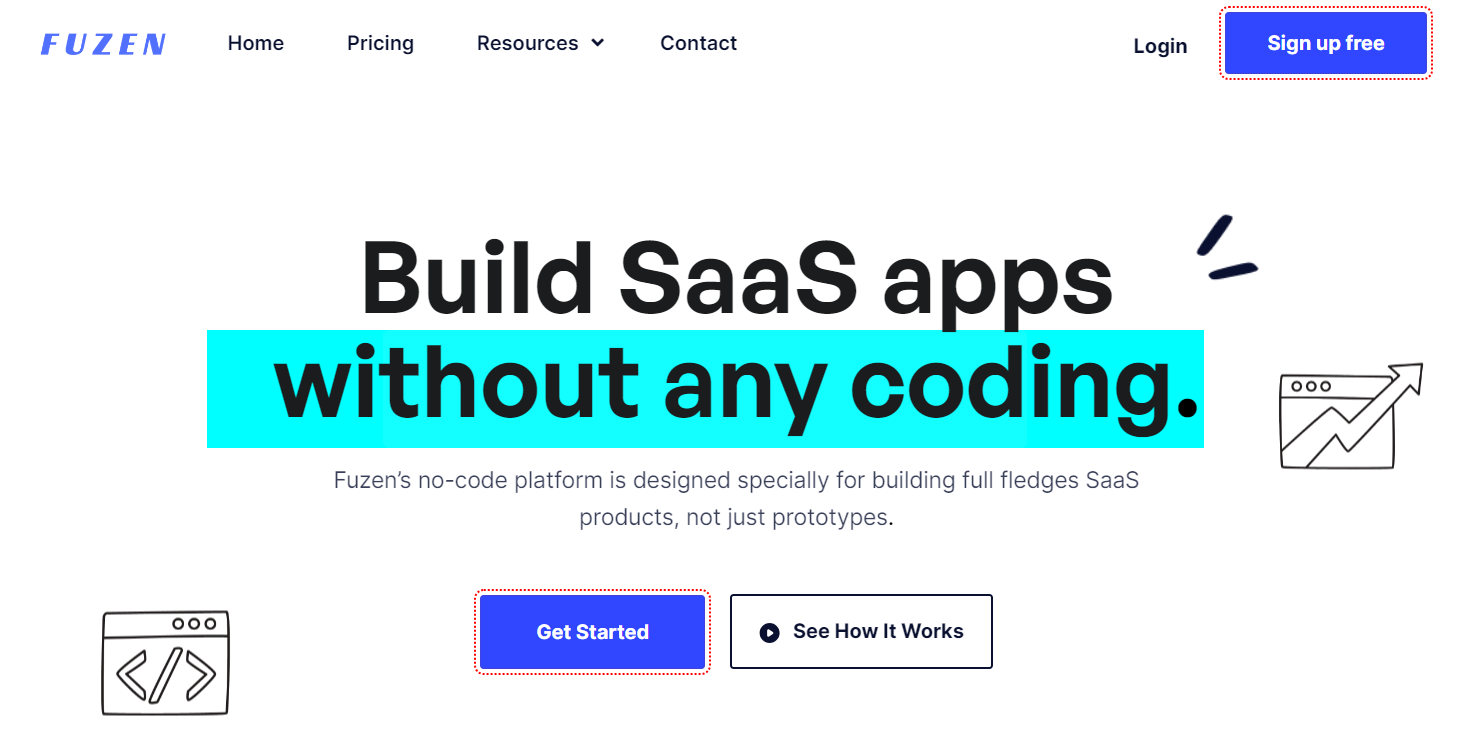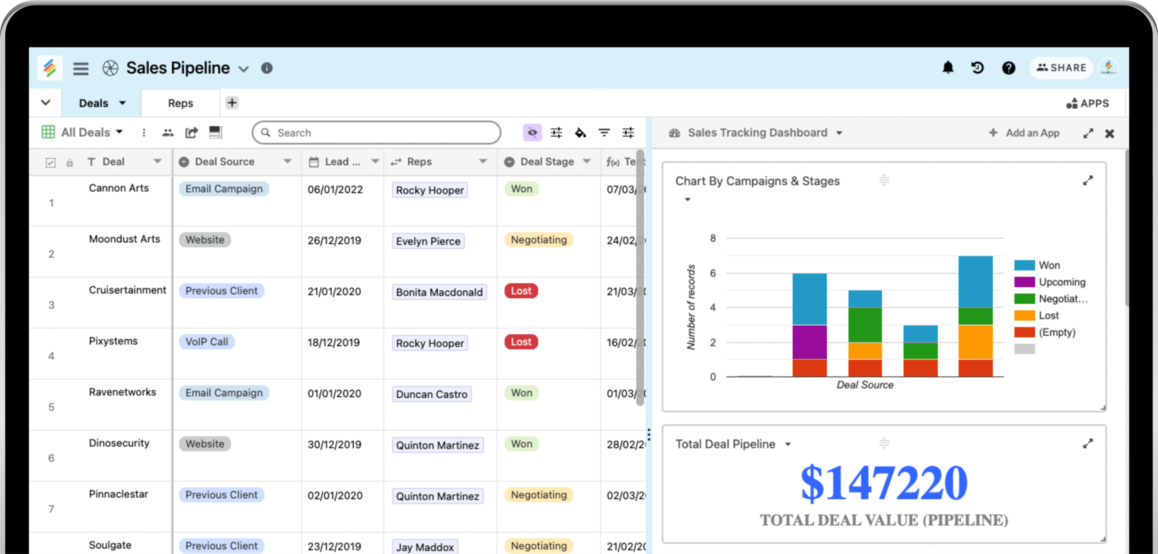No-Code Open System Database Creation: Encouraging Organizations to Construct Faster
No-Code Open System Database Creation: Encouraging Organizations to Construct Faster
Blog Article
Checking Out the Benefits of Scalable Databases That Require No Coding Abilities for Effective Information Administration Solutions
The emergence of scalable data sources that get rid of the requirement for coding abilities offers a transformative chance for companies looking for effective information administration solutions. As we consider the ramifications of such innovations, it becomes vital to examine just how they can improve the landscape of data management and drive sustainable growth in an affordable setting.
Improved Access for Customers
Improved access for customers is a critical element of scalable data sources, making sure that data administration systems are user-friendly and intuitive. In an era where data-driven decisions are paramount, access allows a larger array of customers, including those without substantial technical experience, to engage with data source systems effectively. This democratization of data gain access to facilitates improved collaboration across departments, encouraging employees to make and remove insights educated choices.
Easy to use user interfaces, such as visual data and drag-and-drop functions representation, streamline complex data communications. These enhancements decrease the learning contour related to typical database monitoring, allowing customers to concentrate on leveraging information as opposed to coming to grips with technical intricacies. Scalable data sources commonly incorporate adjustable dashboards and real-time analytics, providing individuals with immediate understandings customized to their specific requirements.

Cost-Effectiveness and Resource Financial Savings
Efficient data administration not only pivots on ease of access but likewise on cost-effectiveness and source financial savings. Scalable data sources developed for customers without coding skills substantially lower financial concerns commonly connected with traditional database management systems. By getting rid of the need for specialized shows proficiency, companies can allot their sources a lot more successfully, focusing funds on core company activities as opposed to extensive training or hiring proficient workers.
Additionally, these databases often use cloud-based remedies, which even more reduce costs associated with equipment and maintenance. Organizations can scale their data source solutions according to their requirements, staying clear of the costs sustained from over-provisioning sources. This flexibility means companies can adjust to changing needs without sustaining unnecessary prices, resulting in substantial long-term financial savings.
Furthermore, user-friendly user interfaces enhance information access and monitoring processes, reducing the moment invested in administrative tasks. This performance translates into labor expense financial savings, enabling groups to focus on tactical campaigns instead of routine maintenance. Overall, adopting scalable databases that call for no coding skills promotes a more affordable strategy to data administration, making it possible for organizations to optimize their sources while maintaining high degrees of operational performance.
Improved Cooperation Across Teams

Furthermore, scalable data sources promote seamless communication among staff member. With easy to use interfaces that need no coding abilities, staff members can conveniently develop, modify, and share reports or dashboards tailored to their specific needs. This democratization of information empowers non-technical users to contribute insights, improving the collective environment.
Furthermore, these data sources support concurrent access, allowing numerous users to deal with the exact same dataset simultaneously. This attribute enhances productivity, as groups can take part in joint information evaluation without the danger of variation control issues. The capacity to leave notes or remarks straight within the data source further promotes discussion and makes clear information analyses.
Streamlined Information Management Processes
In today's data-driven setting, companies recognize the necessity of streamlined data administration refines to make the most of efficiency and precision. By leveraging scalable data sources that call for no coding skills, services can streamline their information handling and decrease the intricacies generally linked with traditional data source systems. This ease of access equips non-technical users to involve directly with data, helping with quicker decision-making and lowering reliance on specialized IT employees.
Structured data monitoring procedures improve workflow by automating routine jobs such as information entry, validation, and reporting. Automated data integration makes sure that info from different sources is accumulated effortlessly, getting rid of silos and fostering an unified sight of critical organization metrics (no-code). Straightforward interfaces enable employees to control data conveniently, allowing them to generate understandings that drive tactical initiatives without the demand for substantial training.
This efficiency not just accelerates functional processes yet additionally decreases the possibility for human error, making sure that data stays reputable and accurate. Ultimately, streamlined data monitoring procedures through scalable data sources bring about boosted performance, enabling organizations to concentrate on core tasks while guaranteeing that their data monitoring methods are efficient and efficient.
Scalability for Growing Companies

For broadening ventures, the capacity to scale up or down is critical. A scalable check out this site database can manage an influx of data produced from brand-new customers, products, or services, ensuring that business procedures stay nonstop. These databases give the capability to take care of peak lots successfully, which is essential throughout durations of rapid development or seasonal spikes.
In addition, many scalable data source remedies are developed with easy to use interfaces that call for no coding abilities, encouraging non-technical staff to manage information properly (no-code). This democratization of data monitoring permits organizations to assign sources tactically and decrease dependence on specialized IT personnel
Ultimately, taking on a scalable database not just improves operational performance however additionally fosters a setting where businesses can evolve and introduce without the restraints of standard data source systems. This adaptability positions companies for long-lasting success in today's competitive landscape.
Verdict
Finally, scalable databases that require no coding skills provide substantial benefits for efficient information management. These systems enhance availability for non-technical customers, decrease functional costs, and advertise partnership throughout teams. By simplifying data management procedures and offering scalability for expanding organizations, such services make it possible for companies to adjust to altering demands effectively. Eventually, the adoption of these straightforward databases fosters development and settings services for lasting success in a dynamic environment.
Enhanced access for users is an essential facet of scalable data sources, ensuring that information administration systems are instinctive and straightforward.User-friendly interfaces, such as visual data and drag-and-drop look at this web-site features depiction, streamline complex information interactions. Overall, embracing scalable data sources that need no coding abilities fosters a much more economical approach to data administration, allowing organizations to optimize their resources while keeping high levels of functional effectiveness.
By leveraging scalable data sources that call for no coding skills, companies can streamline their information handling and minimize the intricacies typically connected with conventional database see page systems - no-code.Streamlined data management procedures improve operations by automating routine jobs such as information entry, recognition, and reporting
Report this page